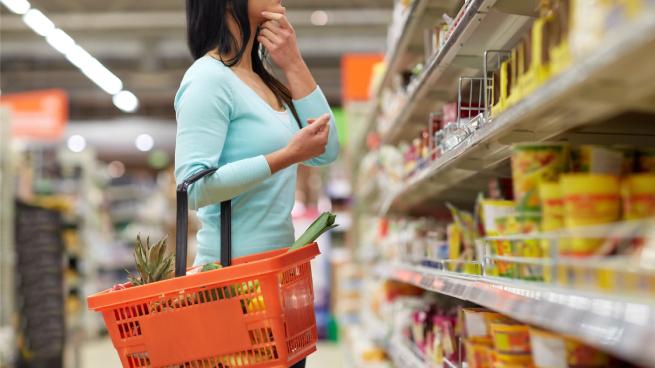Bargain-hunting on the rise in grocery
With high food costs still an ongoing issue, discounts and promotions are more important than ever for Canadian grocery shoppers, shows the latest research from Caddle and Dalhousie University's Agri-Food Analytics Lab.
In a recent survey of primary grocery shoppers across the country, six in 10 consumers said they actively seek out discounts and promotions when shopping for groceries, even switching stores or changing habits to take advantage of this.
“People are bargain-hunting more proactively,” noted Sylvain Charlebois, senior director of the Agri-Food Analytics Lab, in a recent webinar hosted by Caddle and Dalhousie University titled Discounts and Beyond: The Evolution of Grocery Shopping Habits. “[They] are noticing these ‘enjoy tonight’ deals and they’re taking advantage of them… They’re coming in with a plan but it’s more flexible.”
READ: We’ve become astute grocery bargain hunters
While high food prices are certainly a problem, he says the real “enemy” is price volatility. If prices go up steadily at 1.5% to 2.5%, it gives the industry enough leeway to innovate and gives consumers time to adapt, says Charlebois. “But when it’s 5% to 7% you can’t manage and can’t anticipate enough to offer promotions.”
When asked what kind of discounts or promotions were most appealing to consumers these days, 26% of respondents said they preferred percentage discounts on items, followed by loyalty program rewards at 24%. (Only 4% preferred ‘buy one get one’ free offers with volume discounts.)
In alerting consumers to in-store discounts, store flyers or circulars still reign supreme at 61%, followed by apps and website alerts (50%) and in-store signs and displays (44%). Produce and meat topped the list of in-store bargain-hunting categories, followed by packaged and canned food.
Perceptions of savings impact behaviour
“When you look at COVID, there was a one-stop shop happening, and Walmart and Costco were winning that…[now, the trend is] more frequency, different stores, different channels and using apps to save 20% on your grocery bill,” said Caddle’s Chief Revenue Officer Colleen Martin.
What’s even more “mind-blowing,” she said, is that big brands are topping the list of specific grocers or chains considered to be particularly good at offering in-store discounts – with Loblaw holding the top spot.
“Another interesting point is that Giant Tiger just entered ‘fresh’ a few months ago and is already making traction in terms of perception and market share shifts,” said Martin.
READ: Canadians' grocery shopping habits increasingly driven by discounts and deals
Almost half (47%) of grocery shoppers said a 50% discount is the sweet spot in terms of enough savings to consider purchasing the product. The majority (81%) felt that Loblaw’s recent decision to continue offering up to 50% off on near-expired items will help to reduce food waste.
Charlebois also noted a growing consumer awareness around technologies that tackle food waste, such as FlashFood. According to Caddle’s research, one-third of Canadians have used a food-rescuing app, with FlashFood being the most popular.
“The concept is a good one because I do see the moral contract with consumers and grocers wasting less and saving more…but I think it’s a work in progress and more needs to be done here,” he says. “My guess is that over the next few years we’ll see apps that become more proactive and provide more detail to people before buying things.”
With Canadians using technology to find the best deal, whether that be through couponing or flyer and food rescuing apps, Martin said it’s key for grocers, brands and others going forward to focus on removing current friction from that process for consumers.




